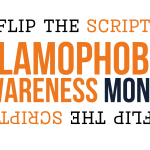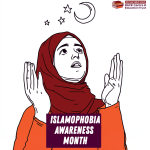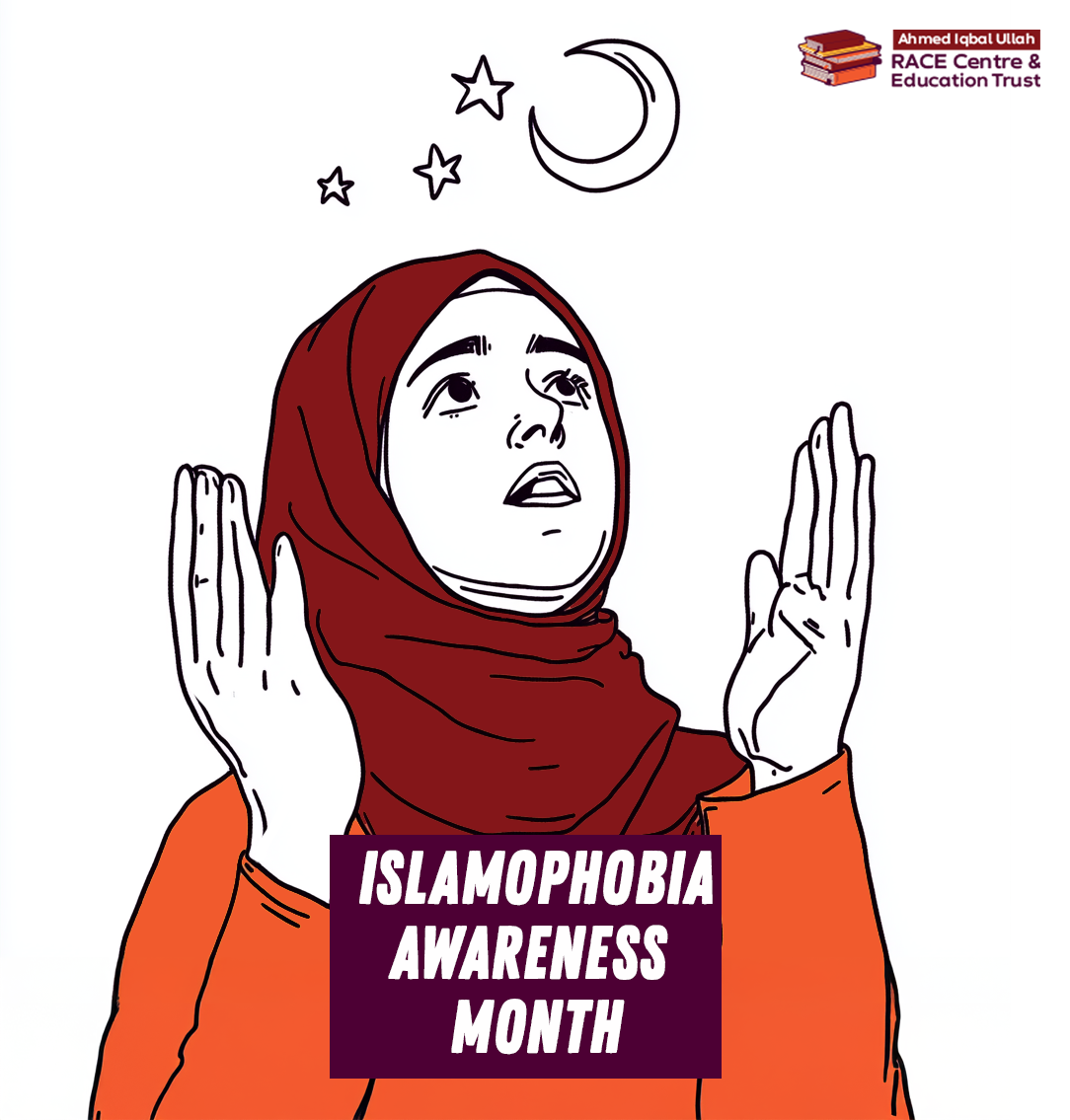In February 2023, the AIU RACE Centre commissioned Suhaiymah Manzoor-Khan to research the collection and create a piece on Islamophobia. Part of the work Suhaiymah produced has been edited to create this blog series. We recognise a lot has happened since February 2023. We want to acknowledge the role of Islamophobia in the global response to Israel’s genocide, following 7 October 2023. We are still keen to share Suhaiymah’s original research and work.
Guest Blog by Suhaiymah Manzoor-Khan
Part 1: What is Islamophobia?
Islamophobia is a word often used to refer to attacks against Muslim people; the use of slurs like ‘terrorist’; or acts like leaving pigs heads outside mosques. Whilst these are all examples of Islamophobia, they are one-off manifestations of it. This blog series will focus on Islamophobia as a system of interconnected processes which work together. These processes, whether intentional or unintentional, disadvantage, harm and violate Muslim people across society, civic life and within all institutions. This form of Islamophobia can require more analysis to understand, but is much more important for us to resist.
The All Party Parliamentary Group (APPG) on British Muslims released a report in 2018 which defined Islamophobia as:
“… rooted in racism and a type of racism that targets expressions of Muslimness or perceived Muslimness.” [1]
This definition is important because explaining Islamophobia as a “type of racism” helps us understand that Muslims do not face acts of interpersonal violence solely for their religious beliefs, but that Muslims have been ‘racialised’. This means Muslims are imagined as a homogenous group who are fundamentally different and ‘Other’ to the rest of society. In simpler terms, to be ‘racialised’ means that a group of people have been labelled with a ‘racial identity’ such as that of being ‘Black’, ‘white’ or ‘Asian’. Once labelled, the group can be associated with certain behaviours or characteristics which impacts how society treats them. This process of designating a ‘racial character’ to a group of people and suggesting certain characteristics are ‘natural’ to them, is the process of ‘racial essentialism’. Here’s an example of how it might work: the label of ‘Muslim’ could be attached to a person because they have a beard, are brown, wear a hijab, speak Arabic, pray in a particular way, buy food labelled ‘halal’, or a combination of these things. As a result of being ‘racialised’ in this way, people will be associated with Islamophobic tropes of violence, backwardness and misogyny, which are assumed to be ‘inherent’ in them. In turn, they will face harm and be subject to discrimination, control and socio-economic exclusion. This is racism.
Importantly, racialisation means that many people who are Muslim may not be perceived to be Muslim. For example, white Muslims or women who may not wear a headscarf. It also means some people who are not Muslim are assumed to be. For example, Sikh men who wear turbans or, famously, Jean Charles da Silva de Menezes, a Brazilian man killed by police in London after being assumed to be one of the 7/7 bombers.[2]
We can understand Islamophobia more deeply if we see it as a form of racism, because we move beyond interpersonal acts of violence or verbal slurs, to understanding Islamophobia as institutional and systemic. In 1999, The Macpherson Inquiry into the death of Stephen Lawrence found institutional racism within the police force to be a central cause of failure in the investigation into Stephen’s murder. Macpherson defined ‘institutional racism’ as:
“The collective failure … to provide an appropriate and professional service to people because of their colour, culture, or ethnic origin. It can be seen or detected in processes, attitudes and behaviour which amount to discrimination through unwitting prejudice, ignorance, thoughtlessness and racist stereotyping which disadvantage minority ethnic people.”
In light of this, Islamophobia is clearly institutional and systemic because stereotypes about Muslims are built into social and institutional processes from schools, to hospitals, to the criminal justice system. Some of these stereotypes are overt and active – such as assuming Muslim people are dangerous or misogynistic. But some stereotypes and Islamophobic thinking are more indirect. For example, the historical erasure of the Islamic origins of much of what is considered ‘European’ philosophy. This extends to the basis of academic disciplines like maths and science. In this way, Muslims are not only discriminated against directly by society and institutions, but also erased from social and institutional memory.
An example of direct institutional Islamophobia can be seen in the stop and search rates of Muslims at the UK border. These stops are justified by Schedule 7 of the Terrorism Act 2000 which gives police power to stop and search people without the need for reasonable suspicion that they might be involved in acts of terrorism. You can read more about Schedule 7 here.
The government does not publish statistics on the religious affiliation of those stopped under Schedule 7, but multiple studies indicate that Muslims face the brunt of its stops. 87% of those held for schedule 7 stops lasting over an hour are ethnic minorities, despite ethnic minorities comprising only 14% of the population. This indicates a racialisation of what is considered ‘reasonable suspicion’ of terrorism.[3] Moreover, studies about the type of questions passengers are asked reinforce that concerns are largely related to Muslim religiosity and Islamic practices.[4] Schedule 7 essentially legitimises legal profiling and discrimination of Muslims or those perceived to be Muslim.
However, border-stops are something that feel distant from the responsibility of many of us. An example of institutional Islamophobia closer to home can be seen through the Prevent duty. The Prevent duty became a piece of legislation in 2015 through the Counter-Terrorism and Security Act. It was passed to “prevent people from being drawn into acts of terror” by making it a statutory duty upon all public sector employees, such as doctors and teachers to look out for signs of radicalisation among those under their charge. However, because ‘radicalisation’ has no clear definition and has been associated with Muslims through years of media coverage and political discourse, the Prevent duty has been criticised for unfairly targeting Muslims and having a chilling effect on freedom of speech. It has made many Muslim students, patients and employees hypervigilant and afraid of what they say or how they act, in case it is considered a ‘sign’ of radicalisation. You can read more about the Islamophobia upheld through the Prevent Strategy here.
Many human rights NGOS have condemned it as a clear example of Islamophobic racism, embedded in processes at the heart of public and civic life. Such institutional Islamophobia works hand-in-hand with the continuous Islamophobic coverage of Muslims in the media. This creates a public sphere in which everyday people internalise stereotypes of Muslims as dangerous and informs their reactions to legal processes like Prevent, to the harm and exclusion of Muslims.
Written by Suhaiymah Manzoor Khan; writer, poet, playwright and public educator
Notes:
[1] The APPG definition can still be built on further as many have suggested (you can read more about this here: https://www.mend.org.uk/wp-content/uploads/2021/11/APPG-ATD-Easy-Read-Guide.pdf).
[2] https://www.amnesty.org/en/wp-content/uploads/2021/06/eur450322005en.pdf
[3] https://www.statewatch.org/media/documents/news/2015/aug/uk-schedule-7-stopwatch-factsheet.pdf
[4] https://www.cage.ngo/wp-content/uploads/2019/10/CAGE-Schedule-7-report.pdf , p.39





